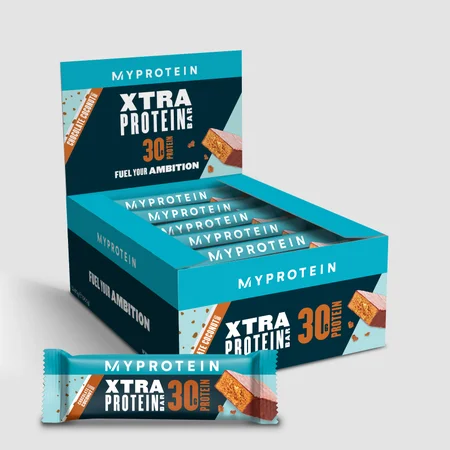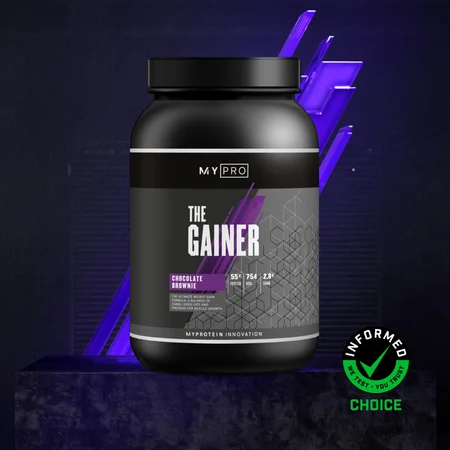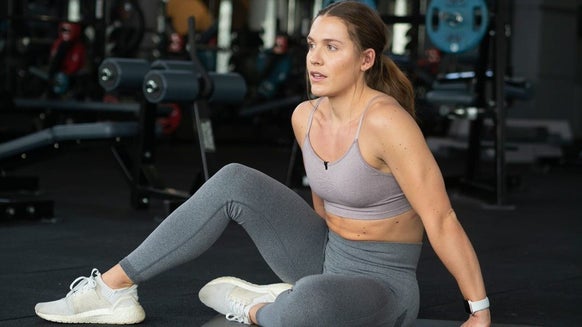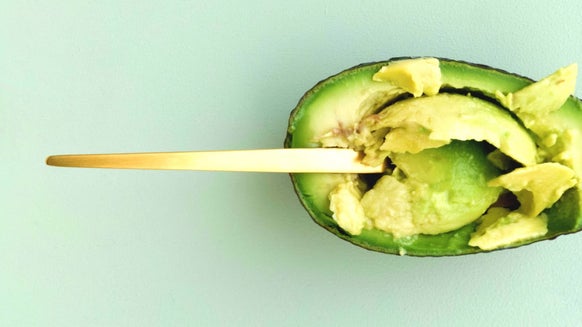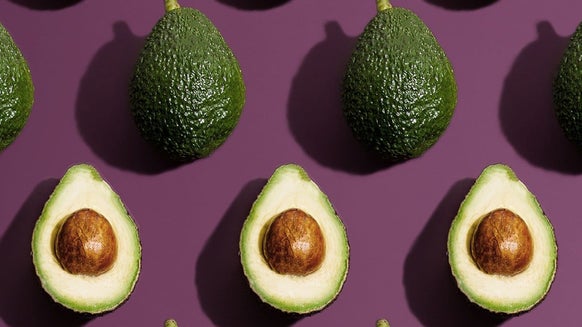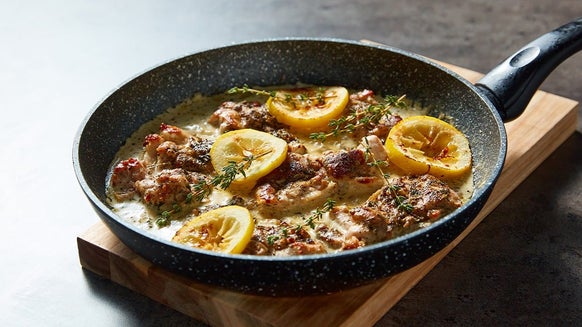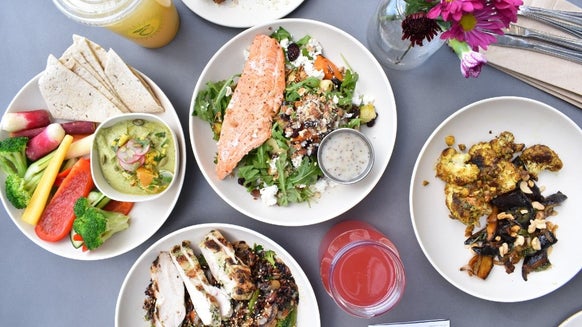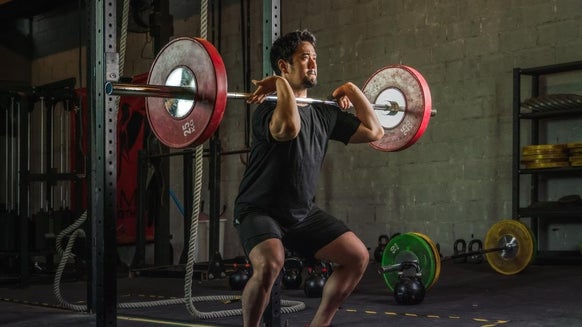How to Build Muscle & Mass | Get To Your Goal

When it comes to building muscle and mass there can be an overwhelming amount of information out there for you to try and get to grips with.
Unfortunately, there’s not a magic supplement out there that’s going to instantly have you bursting out of your t-shirt — the road to gains takes dedication, a lot of training, and proper nutrition.
There’s no one-size-fits all approach, but there are some basic steps to keep in mind when you’re starting your muscle-building journey, and scientifically backed supplements that will support your progress (if used alongside the right training and a balanced diet).
This article will cover key areas of how to build muscle and mass – here’s a list of what’s included:
Where to begin?
Perhaps the most vital point to consider — way before we even get started on supplements or training exercises — is that to put on any mass at all, you need to make sure that you’re hitting calorie surplus.
This is when you eat more calories than you burn — so if you eat 2500 calories one day, but only burn 2000 of them, you’ve created a ‘surplus’ of 500 calories.
Sorry if we’re bursting your bubble, but this doesn’t mean you can just binge on fast food and expect to get biceps like The Rock. These calories should come from protein, carbohydrates, and healthy unsaturated fats, and you should minimise processed foods, refined carbs and saturated fats to avoid simply storing the surplus as fat.
In order to make sure you’re hitting calorie surplus, you’ll firstly need to calculate how many calories your body needs by determining two things: your basal metabolic rate (BMR) and your total daily energy expenditure (TDEE). Then you’ll know the benchmark you need to go over in order to achieve a surplus.

How can I calculate my BMR and TDEE?
Your BMR is your basal metabolic rate, which is the amount of energy your body burns if you do nothing but rest for 24 hours (basically what it takes to keep you breathing, heart beating etc.)
It’s the minimum amount of energy your body requires to remain functioning and doesn’t include the calories you’d use for general movement or exercise.
To calculate your BMR, use one of the following formulas1:
Women: 10 x weight (kg) + 6.25 x height (cm) – 5 x age (years) – 161
Men: 10 x weight (kg) + 6.25 x height (cm) – 5 x age (years) + 5
With this now calculated, you’ll be able to work out your TDEE, which is your total daily energy expenditure — the amount of energy (calories) your body burns to remain functioning with physical movement from daily activities and exercise.
Firstly, you need to determine your physical activity level (PAL) which comes from how active your lifestyle is. We’ve simplified to the following three options:
Sedentary or lightly active lifestyle: you spend a lot of the day sitting/standing without moving much — e.g. you’ve got a desk job that doesn’t demand much physical effort or movement, you mainly use a car as transport, you don’t exercise or play sports regularly.
Active or moderately active lifestyle: you either have a job that’s a little more strenuous, for example, you’re a waiter/waitress constantly on your feet or a construction worker, or you have a desk job but exercise/play sport regularly during the week.
Vigorous or vigorously active lifestyle: you regularly engage in either strenuous work — e.g. you’re in the armed forces or work in agriculture — or physical activity that lasts longer than a few hours — e.g. you’re an athlete, personal trainer, or dance teacher.
| Level of Activity | Average PAL Value |
| Sedentary or light activity lifestyle | 1.5 |
| Active or moderately active lifestyle | 1.8 |
| Vigorous or vigorously active lifestyle | 2.2 |
Once you’ve got a PAL value all you need to do is multiply it with your BMR to work out your total daily energy expenditure.
BMR x PAL value = TDEE
The figure you get for your TDEE is the number of calories you need to eat daily just to maintain your current weight — so in terms of trying to build muscle and gain mass, this amount is the bare minimum you should always try to be exceeding to achieve a surplus.
What supplements can help me hit calorie surplus?
Once you’ve worked out your calorie surplus, you might discover that you need to start eating a lot more than you currently are.
This can get both time-consuming and expensive — if you’re trying to double the amount of meals you have in your day, it’s probably not realistic to be prepping and cooking all of them from scratch.
That’s where supplements can be really useful.
All-in-one and gainer protein blends are a quick and convenient meal replacement — they can almost instantly deliver protein, carbs, and calories to your diet, without unnecessary sugar or fat. Here are some of our most popular blends:
Weight Gainer Blend: our most affordable gainer shake packs in 30g of both fast- and slow-digesting proteins — perfect for continual delivery throughout the day — along with 50g of carbs per serving to result in a hard-hitting 388 calories.
Extreme Gainer Blend: the ultimate bulk-up companion has 35g of protein along with 61g of carbs to deliver 446 calories per serving. It’s also packed with vitamins, minerals, and 5g of creatine monohydrate which is scientifically proven to increase physical performance — making this a great training support.
THE Gainer: our premium weight-gainer, ideal for packing on size and strength. Each serving is loaded with 45g of protein, 120g of carbs, 4g of BCAAs, 5g of glutamine, and essential vitamins and minerals — the result? 784 calories. Yes, you read that right.
Vegan Gainer Blend: our answer to those leading a plant-based lifestyle, this vegan-friendly blend contains 29g of quality protein sourced from pea protein isolate and brown rice protein, along with 39g of carbs, for a shake that’s 400 calories per serving. You can definitely still get your gains with greens.
There are plenty of other supplements you can use to increase your calorie count in other meals. Try adding 100% Instant Oats to your regular protein shakes to make your own gainer blend, or use calorific nut butters to bulk out your porridge, shakes, and snacks.

How much protein do I need to gain muscle?
Okay, so we’ve covered the mass gaining part, but to make sure this is converting to bulging biceps and not just a spare tire around your stomach, you need to make sure that a considerable amount of the calories you’re taking on are coming from protein.
To build muscle, you should aim for 1g of protein per pound of bodyweight, or 2.2g per kg. For example, someone weighing 180lbs should eat at least 180g of protein a day.
It’s important to get a sustained release of protein throughout the day, especially after training, to help with muscle recovery and the growth of new muscle tissue.
As covered in the section above, shakes are an easy, convenient way to do this wherever you are, without the fuss of preparing a whole meal. High-protein snacks are also great to keep things interesting and satisfy cravings throughout the day, these are some of our tastiest options:
Protein Cookies: these are the ultimate high-protein treat, with a massive 38g of quality milk protein per cookie. Choose from seven delicious flavours, they also provide 20g of carbs with 70% less sugar and 40% less fat than supermarket alternatives.
Protein Bar: packed with 26g of protein, 22g of carbs, and 3g of fibre per bar, these will help you hit calorie surplus, as well as being great for a post-workout boost. They come in three indulgent flavours — Caramel Hazelnut, Toffee Vanilla, and Dark Chocolate & Berry.
High-Protein Bars: each bar contains an impressive 30g of both fast- and slow-releasing proteins, making this a perfect snack for between meals to provide you with a sustained supply throughout the day. They’re high in fibre, low in sugar and have 23g of carbs — ideal muscle-building fuel.
What are the best supplements for building muscle?
Supplements can’t replace a healthy, balanced diet or the hours you put in at the gym. They can assist with both of these though — making it that bit easier to get to your goals.
Protein powders — whether it’s a whey protein formula or a gainer blend, this should be the first thing in your basket. Protein is an essential macronutrient that contributes to the growth and maintenance of muscle mass, making it a vital part of your journey to gains.
Creatine monohydrate — a boost for your training sessions, it’s been scientifically proven to increase physical performance in successive bursts of short-term, high-intensity exercise.
BCAAs — branched-chain amino acids are key for gaining as they’re made up of the essential amino acids — leucine, isoleucine and valine. These are naturally found in protein and help to build and repair new muscle.
Beta alanine — a naturally occurring, non-essential amino acid which is ideal for sports that require explosive movements and prolonged endurance exercise.
Multi-vitamin powder/ tablets — these are a convenient way to hit daily recommended intake which can be difficult through diet alone. This can help you maintain general good health, which is important when you’re putting your body through its paces with a tough training schedule — helping you return to the gym day after day.
Omega supplements — the perfect way to get essential fatty acids into your diet without the expense or effort of having to eat fish every day. The EPA and DHA in omega-3, 6 and 9 contribute to the normal heart health.

Why choose creatine?
Creatine monohydrate is a supplement that can help you train harder. It can be utilised by your body as a quick form of energy during high-intensity, short-burst activities, such as lifting heavy weights or starting to sprint.
By providing your muscles with extra energy in this way, you’ll begin to be able to get more from your training — it’s not a golden ticket to smashing your personal bests, but it’s a great support to help you on your way.
New creatine users should begin with a loading phase to saturate their muscles. This means taking a 5g scoop four times a day at regular intervals, before commencing with a standard 3-5g a day recommended use.
We’ve got a range of creatine supplements to suit everyone — whether you find adding a scoop of creatine powder to your shakes most convenient, or prefer taking our creatine pills, we’ve got you covered.
What are the best exercises for getting bigger?
You should focus your training around compound exercises, as these work several muscles at once rather than isolating one muscle group. These movements include:
- Squat
- Bench press
- Deadlift
- Chin-up
- Overhead press/rows
- Dips
Set yourself goals in order to keep a track of steady progress, rather than going in full-force on the first session expecting instant results, and putting yourself at risk of injury.
The most effective way to build muscle is through ‘progressive overload’, which means gradually upping your training over time.
Just when your body starts to get to grips with the weights you’re lifting, step back out of your comfort zone and raise the amount of reps you do or increase the kilograms. This is when your body will begin to grow muscle in order to adapt to the new load.

Why are rest days important?
You need to give your muscles time to recover after your workouts in order for them to repair. When you’re lifting weights you’re essentially tearing muscle fibres in order to make way for new muscle growth — so working them intensely everyday will do more damage than good.
Your joints are also put under a strain whilst working out, so rest days are important to prevent over-training injuries in that department too.
Plus, taking a break can be great for your mental health as it allows you to return feeling refocused and refreshed. Feeling positive about going to the gym will definitely help you perform well once you’re there — your training should be enjoyable, not a punishment.
Should I be tracking my progress?
It’s important to keep track of what you do in your workouts, as this will help you carry out the ‘progressive overload’ approach to training.
Simply noting down the exercises, weights and reps you’ve done will mean that next time you’ll instantly know exactly what you’re aiming for — whether that’s matching the last session or slightly raising your game.
In terms nutrition, it can be really helpful to make a note of what you’re eating in a day purely to make sure that you’re hitting that all-important calorie surplus and getting plenty of protein in.


Lauren is an English Literature graduate originally from the South. She’s always loved swimming, has discovered the power of weight training over the past few years, and has lots of room for improvement in her weekly hot yoga class.
On the weekends she’s usually cooking or eating some kind of brunch, and she enjoys trying out new recipes with her housemates – especially since shaking off student habits, like mainly surviving off pasta. Above all, she’s a firm believer in keeping a balance between the gym and gin.
Find out more about Lauren’s experience here.
- Mifflin, M. D., St Jeor, S. T., Hill, L. A., Scott, B. J., Daugherty, S. A., & Koh, Y. O. (1990). A new predictive equation for resting energy expenditure in healthy individuals. The American journal of clinical nutrition, 51(2), 241-247.
